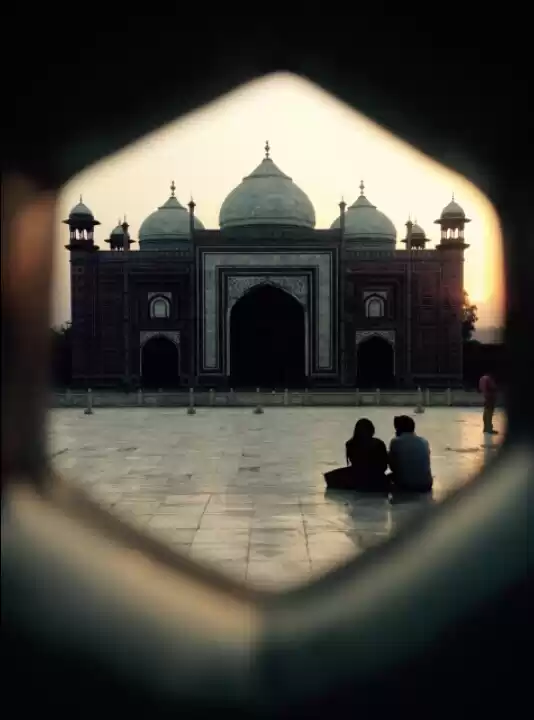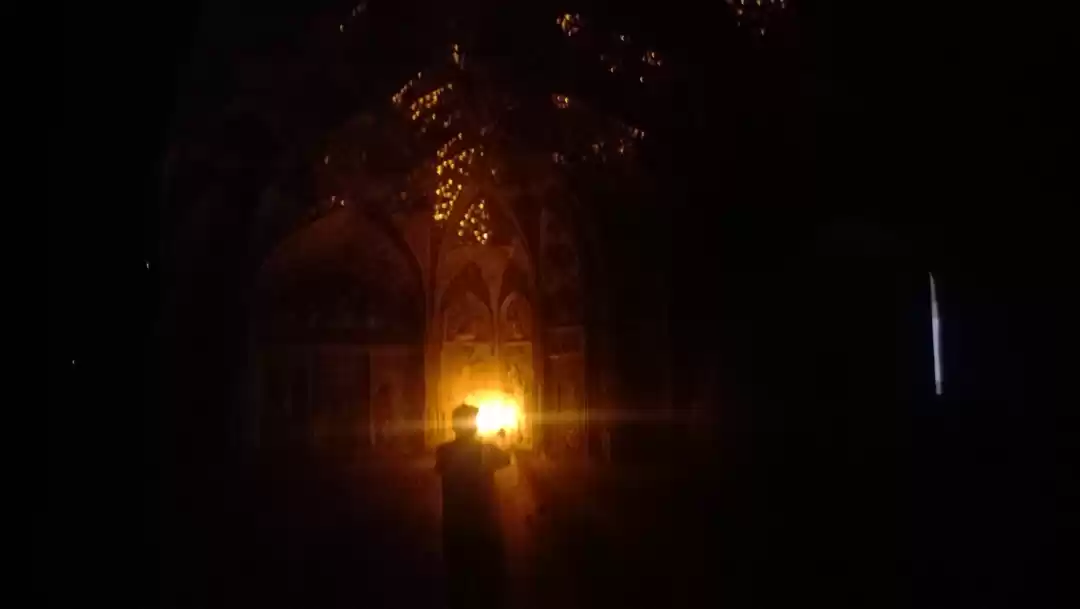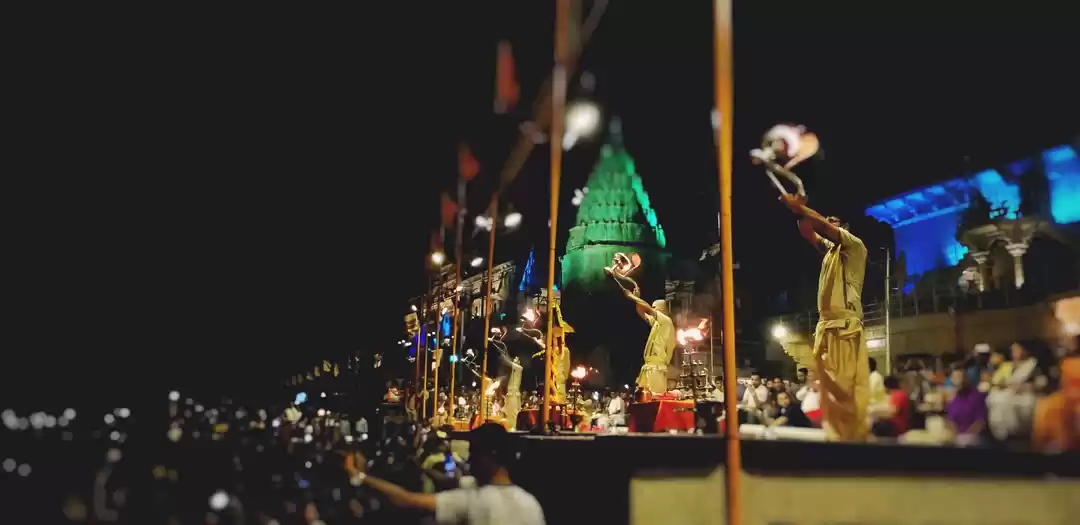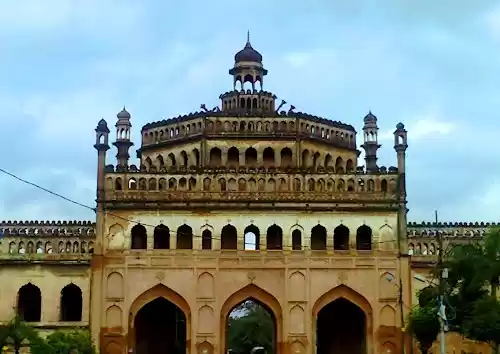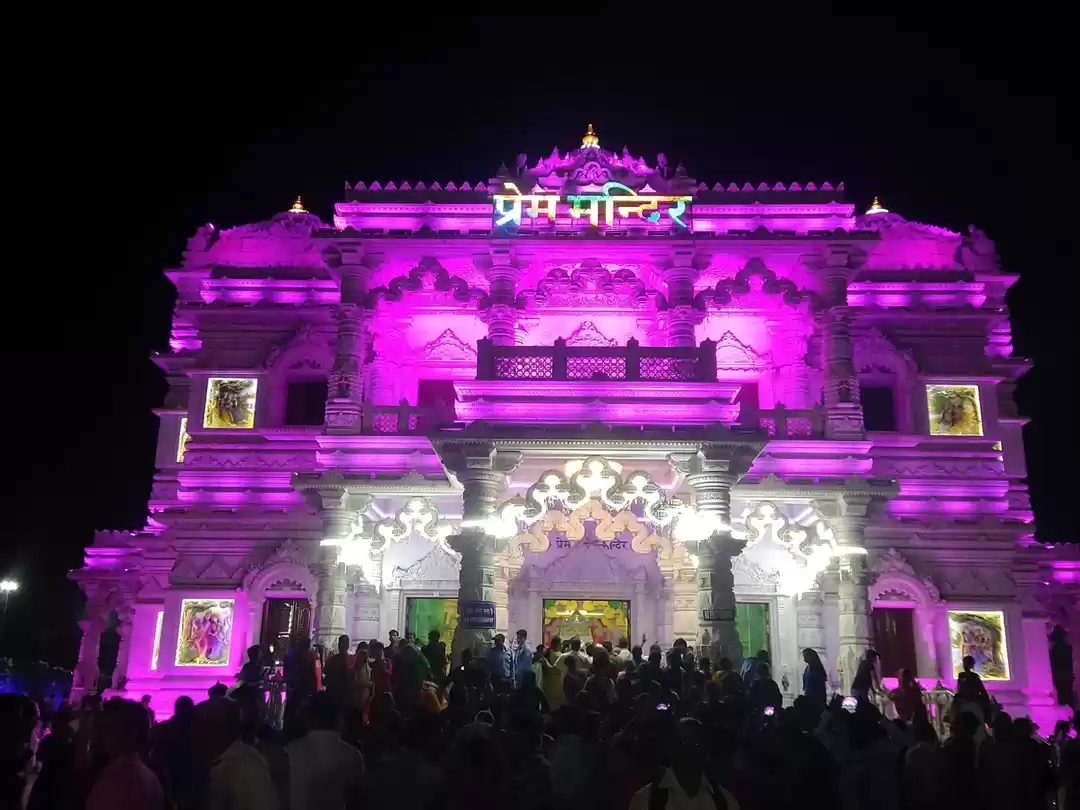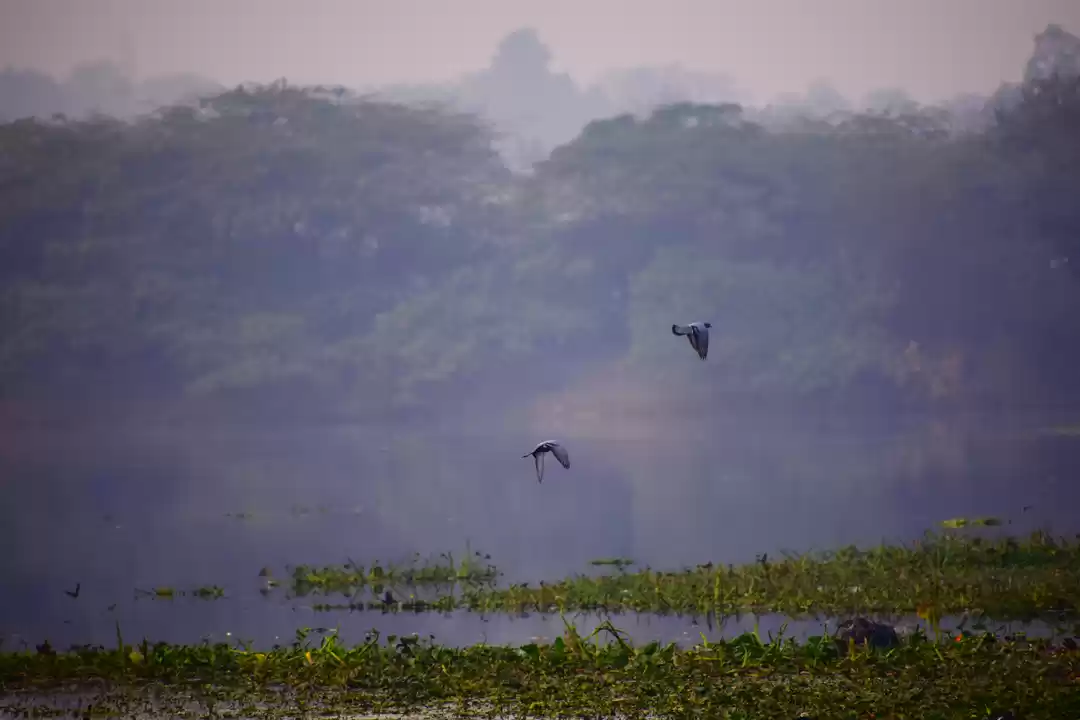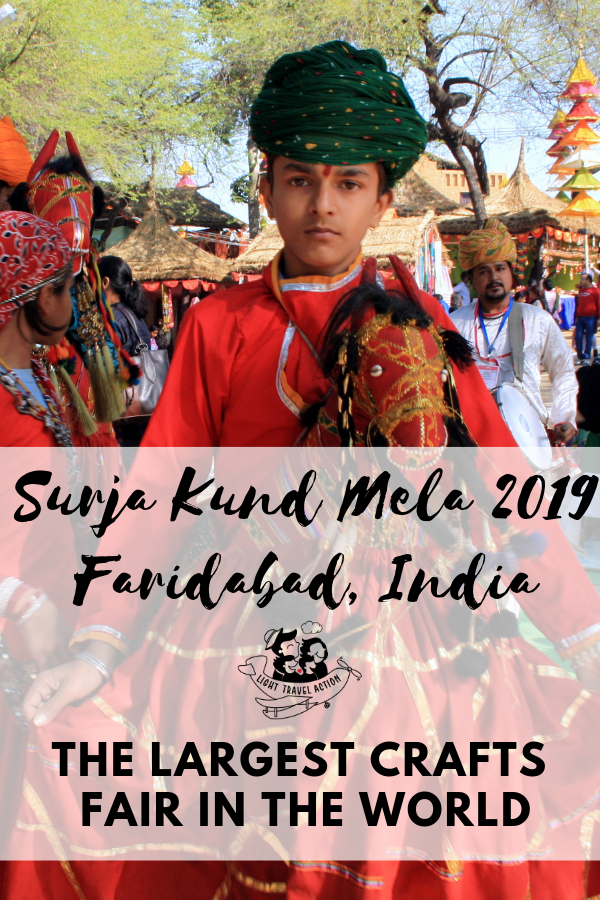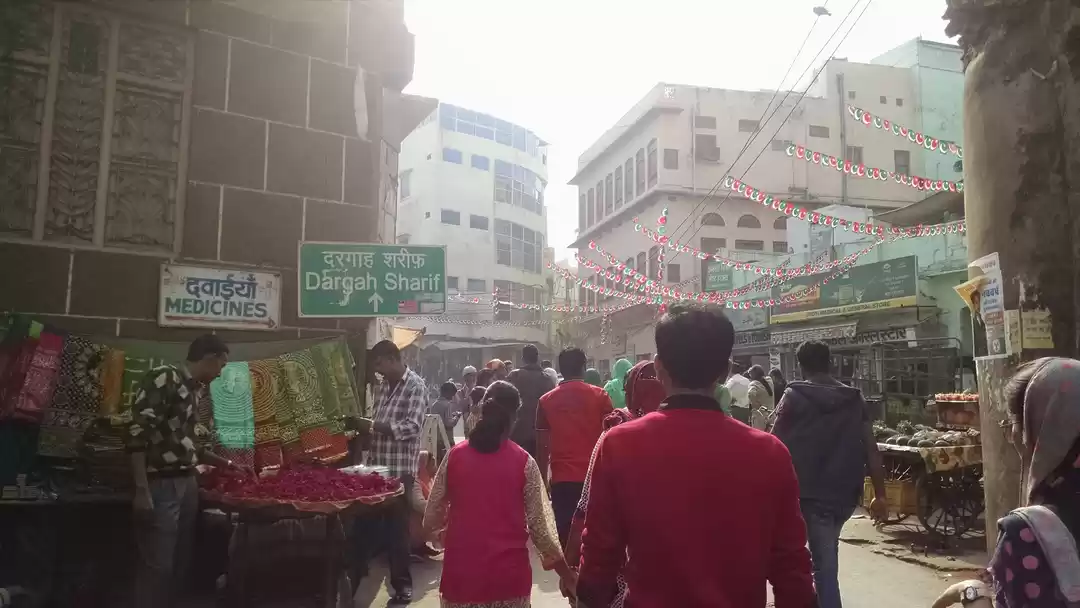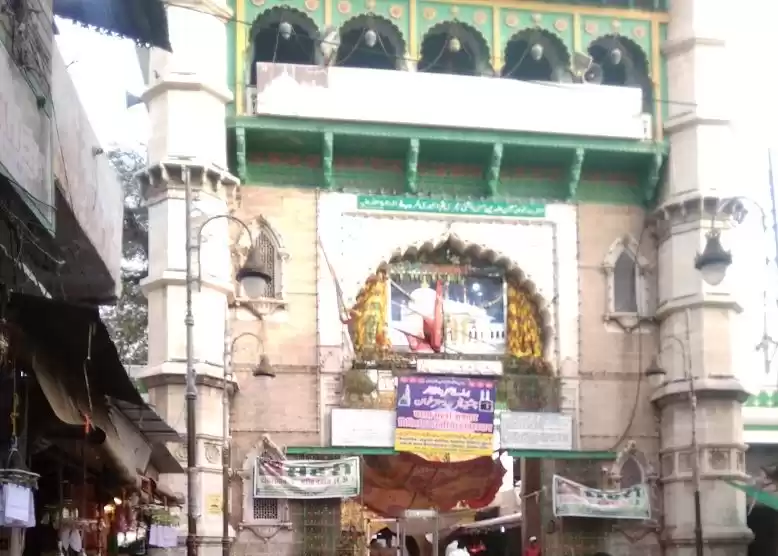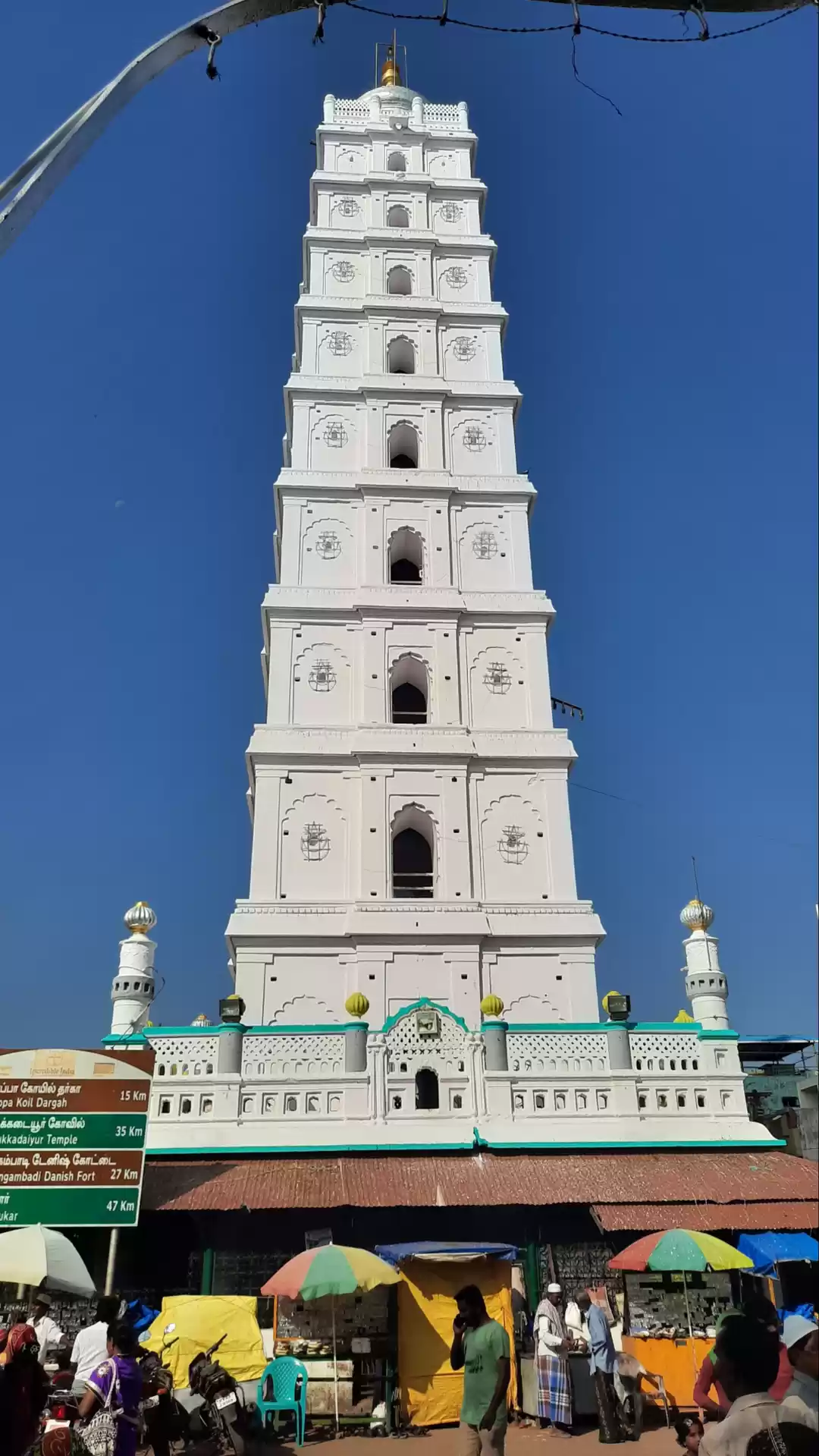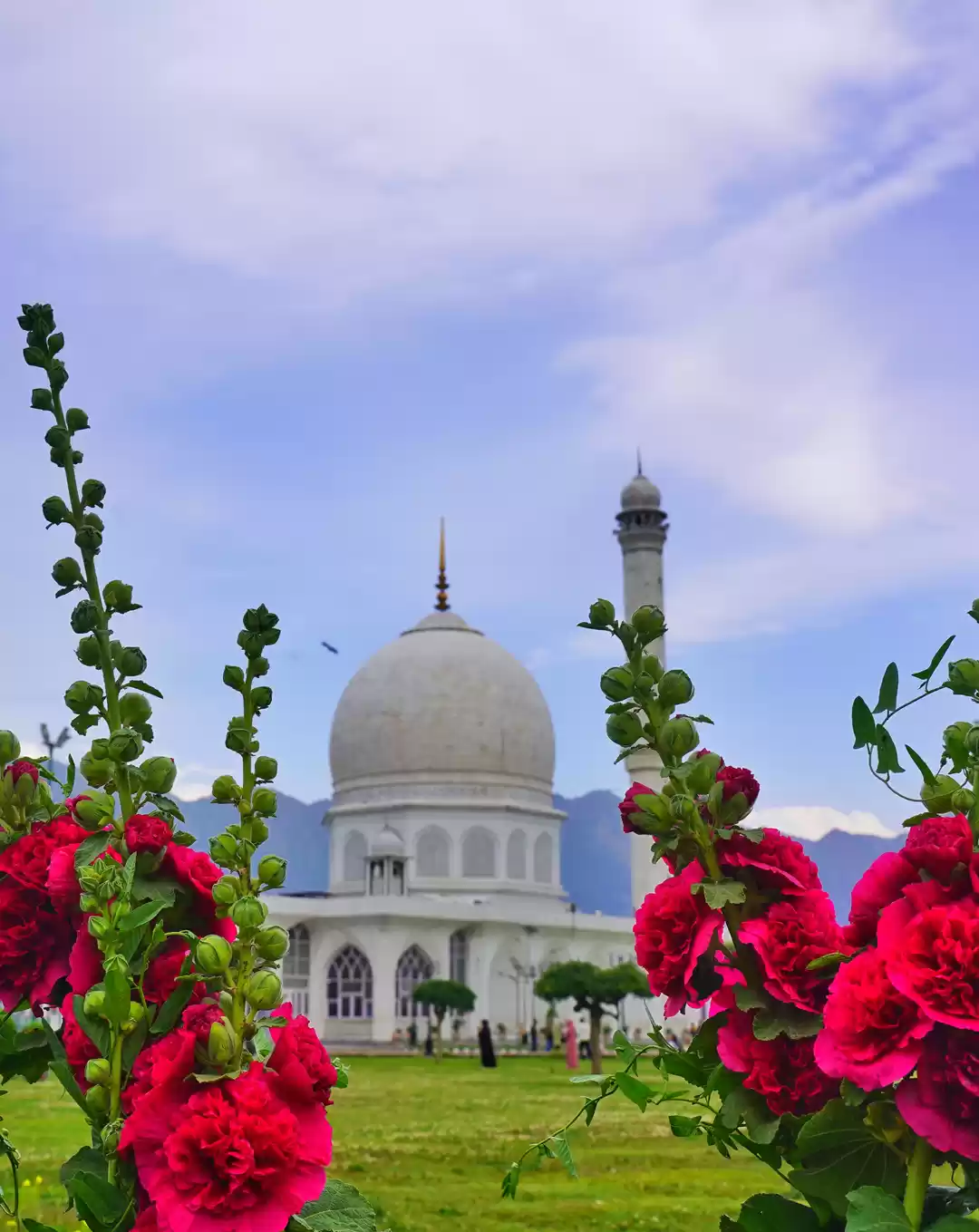Have you ever wondered how a Muslim pilgrimage site can celebrate the Hindu festival of Holi? Or how a Sufi saint can inspire millions of people across religions and cultures? If yes, then you should visit Dewa Sharif, a sacred site of love and harmony in Lucknow, Uttar Pradesh.
Dewa Sharif is a shrine dedicated to the Sufi saint Haji Waris Ali Shah, who lived in the 19th century and preached universal brotherhood and peace. The shrine, also known as Dewa Sharif Dargah or Dewa Sharif Mazar, is located in the town of Dewa, about 25 km from Lucknow. It is one of the most popular Muslim pilgrimage sites in India, attracting thousands of devotees and tourists every year.
The main attraction of Dewa Sharif is the Mazar of Haji Waris Ali Shah, a white marble structure that houses the tomb of the saint. The Mazar is surrounded by a beautiful garden and a pond, and has a dome and four minarets. The Mazar is also adorned with colorful flags and flowers, and illuminated with lamps and candles at night.
Dewa Sharif is not only a place of worship, but also a place of celebration and culture. The shrine hosts the annual Urs festival, which is the most popular event at Dewa Sharif. The Urs festival commemorates the death anniversary of the saint, and lasts for 10 days in the month of October or November. The festival features cultural programs, sports events, shops, and fireworks, and attracts people from all walks of life.
But the most unique and remarkable feature of Dewa Sharif is the celebration of Holi, the Hindu festival of colors, at the shrine. Holi is celebrated in the month of March, and marks the arrival of spring and the victory of good over evil. At Dewa Sharif, people of different faiths participate in the festival and color themselves with gulaal, a natural dye made from flowers. This is a rare and wonderful sight, as it shows the harmony and diversity of the people who follow the teachings of the Sufi saint.
If you are looking for a spiritual and cultural experience in Lucknow, then you should not miss Dewa Sharif. It is a place where you can witness the beauty and significance of Sufism, and how it transcends the boundaries of religion and caste. It is a place where you can feel the love and harmony of the people, and how they celebrate life and joy. It is a place where you can discover the true essence of India, and how it embraces diversity and unity.
History and Architecture of the Mazar
Haji Waris Ali Shah was born in 1809 in Dewa, and belonged to the Qadriyya order of Sufism. He was a disciple of Khwaja Inayatullah Qadri, a renowned Sufi master. He travelled extensively across India and abroad, spreading the message of love, peace, and humanity. He also performed many miracles, such as healing the sick, feeding the hungry, and helping the needy. He was revered by people of all religions and castes, and had a large number of followers. He died in 1905, and was buried in Dewa.
The Mazar of Haji Waris Ali Shah was built by his followers, and is considered a sacred and powerful place. The Mazar is a white marble structure that has a dome and four minarets. The dome is decorated with verses from the Quran, and the minarets have crescent and star symbols. The Mazar has a main gate, which leads to a courtyard, where the tomb of the saint is located. The tomb is covered with a green cloth, and has a silver railing around it. The tomb is also surrounded by a garden and a pond, which add to the beauty and tranquility of the place.
The Mazar is a place of worship and devotion, where people come to pay their respects and seek blessings from the saint. The Mazar is open to people of all faiths and backgrounds, and welcomes everyone with love and grace. The Mazar is also a place of meditation and contemplation, where people can experience the presence and guidance of the saint. The Mazar is also a place of miracles and wonders, where people can witness the power and grace of the saint. Many people claim to have their wishes fulfilled and their problems solved after visiting the Mazar.
The Mazar is a place of beauty and architecture, where people can admire the craftsmanship and design of the structure. The Mazar is a blend of Mughal and Awadhi styles, and reflects the rich and diverse culture of Lucknow. The Mazar is also a place of art and culture, where people can enjoy the paintings, calligraphy, and music that adorn the walls and the atmosphere of the place. The Mazar is also a place of heritage and history, where people can learn about the life and teachings of the saint, and how he influenced the society and the nation.
Celebration of Holi at Dewa Sharif
One of the most unique and remarkable features of Dewa Sharif is the celebration of Holi, the Hindu festival of colors, at the shrine. Holi is celebrated in the month of March, and marks the arrival of spring and the victory of good over evil. It is a festival of joy and fun, where people play with colors, water, and flowers, and exchange sweets and greetings.
At Dewa Sharif, Holi is celebrated with great enthusiasm and fervor, and attracts people from all over the country. The celebration starts a week before the actual festival, and lasts for three days. The first day is known as Chhoti Holi, or the small Holi, where people light bonfires and pray for the destruction of evil. The second day is known as Badi Holi, or the big Holi, where people play with colors, water, and flowers, and enjoy music and dance. The third day is known as Rang Panchami, or the fifth day of colors, where people continue to play with colors, and also visit the Mazar and seek blessings from the saint.
The celebration of Holi at Dewa Sharif is a rare and wonderful sight, as it shows the harmony and diversity of the people who follow the teachings of the Sufi saint. People of different faiths, castes, and backgrounds participate in the festival, and color themselves with gulaal, a natural dye made from flowers. The gulaal is also offered to the saint, and sprinkled on his tomb. The gulaal is considered a symbol of love, respect, and gratitude, and is believed to have healing and blessing properties.
The celebration of Holi at Dewa Sharif is also a reflection of the philosophy and message of the Sufi saint, who preached universal brotherhood and peace. He said, “Sabka Malik Ek”, which means “God is one”. He also said, “Ishq Allah, Mahboob-e-Ilahi”, which means “Love God, the beloved of God”. He taught that all religions are paths to the same truth, and that all people are children of the same God. He taught that love is the essence of life, and that love can overcome all differences and conflicts.
The celebration of Holi at Dewa Sharif is a testimony to the spirit and culture of India, and how it embraces diversity and unity. It is a testimony to the legacy and influence of the Sufi saint, and how he inspired millions of people across religions and cultures. It is a testimony to the beauty and joy of life, and how it can be celebrated with colors and flowers.
Annual Urs Festival at Dewa Sharif
The most popular and awaited event at Dewa Sharif is the annual Urs festival, which commemorates the death anniversary of the Sufi saint Haji Waris Ali Shah. The Urs festival is a grand and festive occasion, which lasts for 10 days in the month of October or November. The Urs festival is a time of devotion and celebration, where people come to pay their respects and seek blessings from the saint, and also enjoy the cultural and social activities that take place at the shrine.

The Urs festival begins with the Ghusl, or the ceremonial bath of the saint’s tomb, which is performed by the custodians of the shrine. The tomb is then covered with a new cloth, and decorated with flowers and flags. The Urs festival also involves the Qawwali, or the devotional music, which is performed by the famous singers and musicians from all over the country. The Qawwali is a form of Sufi music, which expresses the love and praise of God and the saint. The Qawwali is a soulful and mesmerizing experience, which transports the listeners to a state of ecstasy and bliss.
The Urs festival also features the Mushaira, or the poetry recitation, which is organized by the literary and cultural associations of Lucknow. The Mushaira is a form of Urdu poetry, which showcases the wit and wisdom of the poets and writers. The Mushaira is a humorous and entertaining experience, which also involves the participation of the audience and the judges.
The Urs festival also includes the Sports, or the athletic events, which are organized by the youth and sports clubs of Dewa. The Sports include various games and competitions, such as wrestling, kabaddi, horse racing, and kite flying. The Sports are a form of physical and mental fitness, which showcase the strength and skill of the participants. The Sports are also a source of fun and excitement, which attract a large number of spectators and supporters.
The Urs festival also offers the Shopping, or the market stalls, which are set up by the local and regional vendors and traders. The Shopping offers a variety of products and services, such as clothes, jewelry, handicrafts, books, food, and medicine. The Shopping is a form of commerce and culture, which display the diversity and richness of the region and the country. The Shopping is also an opportunity to buy souvenirs and gifts, and to enjoy the flavors and aromas of the place.
The Urs festival also ends with the Fireworks, or the light and sound show, which are arranged by the authorities and the sponsors of the shrine. The Fireworks are a form of art and entertainment, which create a spectacular and dazzling display of colors and patterns in the sky. The Fireworks are also a symbol of joy and gratitude, which express the happiness and appreciation of the people for the saint and the festival.
The Urs festival is a time of devotion and celebration, where people come to pay their respects and seek blessings from the saint, and also enjoy the cultural and social activities that take place at the shrine. The Urs festival is a time of unity and diversity, where people of different faiths, castes, and backgrounds come together and share their love and respect for each other. The Urs festival is a time of tradition and innovation, where people preserve and promote their heritage and culture, and also embrace and appreciate the changes and developments of the times.
Travel Information and Tips
If you are planning to visit Dewa Sharif, here are some travel information and tips that will help you make the most of your trip:
Location:
Dewa Sharif is located in the town of Dewa, about 25 km from Lucknow, the capital city of Uttar Pradesh. You can reach Dewa Sharif by road, rail, or air. The nearest airport is the Chaudhary Charan Singh International Airport in Lucknow, which is well connected to major cities in India and abroad. The nearest railway station is the Barabanki Junction, which is about 12 km from Dewa Sharif. You can also take a bus or a taxi from Lucknow to Dewa Sharif, which will take about an hour.
Timings:
Dewa Sharif is open to visitors throughout the year, from 6 am to 10 pm. However, the best time to visit Dewa Sharif is during the Urs festival or the Holi festival, when the shrine is at its most vibrant and lively. The Urs festival is held in the month of October or November, and the Holi festival is held in the month of March. You can also visit Dewa Sharif on Thursdays, which are considered auspicious and special days for the saint and his followers.
Entry fee:
There is no entry fee to visit Dewa Sharif, but you can make a voluntary donation at the shrine, which is used for the maintenance and development of the place. You can also offer flowers, sweets, or incense to the saint, which are available at the shops near the shrine. You can also buy gulaal, which is used for the Holi celebration, and flags, which are used for the Urs festival, at the shops.
Parking:
There is a parking facility available at Dewa Sharif, which can accommodate cars, buses, and bikes. The parking fee is nominal, and depends on the type and duration of the vehicle. You can also park your vehicle at the nearby hotels or restaurants, which may charge a higher fee.
Nearby attractions
Dewa Sharif is not only a religious site, but also a cultural and historical site, which has many nearby attractions that you can explore. Some of the nearby attractions are:
Barabanki, which is a district and a city near Dewa Sharif, and is known for its historical and religious significance. Barabanki has many temples, mosques, churches, and gurudwaras, such as the Siddheshwar Mahadev Temple, the Parijaat Tree, the Badosarai Mosque, the Imambada, and the Gurudwara Nanak Math. Barabanki is also famous for its handicrafts, such as pottery, wood carving, and zari work.
Lucknow, which is the capital city of Uttar Pradesh, and is known for its rich and diverse culture and heritage. Lucknow has many monuments, museums, gardens, and markets, such as the Bara Imambara, the Chota Imambara, the Rumi Darwaza, the British Residency, the Lucknow Zoo, the Hazratganj Market, and the Aminabad Market. Lucknow is also famous for its cuisine, such as the kebabs, biryanis, chaats, and kulfi.
Ayodhya, which is a holy city and a pilgrimage site for Hindus, and is known for its association with Lord Rama, the hero of the epic Ramayana. Ayodhya has many temples, ghats, and ashrams, such as the Ram Janmabhoomi Temple, the Hanuman Garhi Temple, the Kanak Bhawan Temple, the Nageshwarnath Temple, the Saryu Ghat, and the Valmiki Ashram. Ayodhya is also famous for its festivals, such as the Ram Navami, the Diwali, and the Ram Leela.
Where To Stay Near Dewa Sharif
Hotels:
There are many hotels and guest houses available near Dewa Sharif, which cater to different budgets and preferences. Some of the hotels are:
Hotel Dewa Retreat, which is a luxury hotel that offers spacious and comfortable rooms, with amenities such as air conditioning, television, Wi-Fi, and room service. The hotel also has a restaurant, a swimming pool, a spa, and a conference hall. The hotel is located about 2 km from Dewa Sharif, and charges about Rs. 5000 per night.
Hotel Raj Palace, which is a budget hotel that offers basic and clean rooms, with amenities such as fan, television, and attached bathroom. The hotel also has a restaurant, a parking, and a travel desk. The hotel is located about 1 km from Dewa Sharif, and charges about Rs. 1000 per night.
Dewa Sharif Guest House, which is a guest house that offers simple and cozy rooms, with amenities such as bed, fan, and common bathroom. The guest house also has a kitchen, a garden, and a terrace. The guest house is located within the premises of Dewa Sharif, and charges about Rs. 500 per night.
Dewa Sharif is a sacred site of love and harmony in Lucknow, Uttar Pradesh, where you can witness the beauty and significance of Sufism, and how it transcends the boundaries of religion and caste. It is a place where you can feel the love and harmony of the people, and how they celebrate life and joy. It is a place where you can discover the true essence of India, and how it embraces diversity and unity.
Are you ready to experience the beauty and harmony of Dewa Sharif? If yes, then book your trip to Dewa Sharif and Lucknow with Tripoto, the best online travel platform that offers you the best deals and packages for your travel needs.
Tripoto is a platform where you can find and compare the best travel packages, hotels, and guides for your destination, and also read and share your travel stories and experiences with other travelers. Tripoto is a platform where you can plan, book, and enjoy your trip with ease and convenience.
So, what are you waiting for? Visit Tripoto today, and book your trip to Dewa Sharif and Lucknow, and get ready to explore the sacred site of love and harmony in Lucknow.

